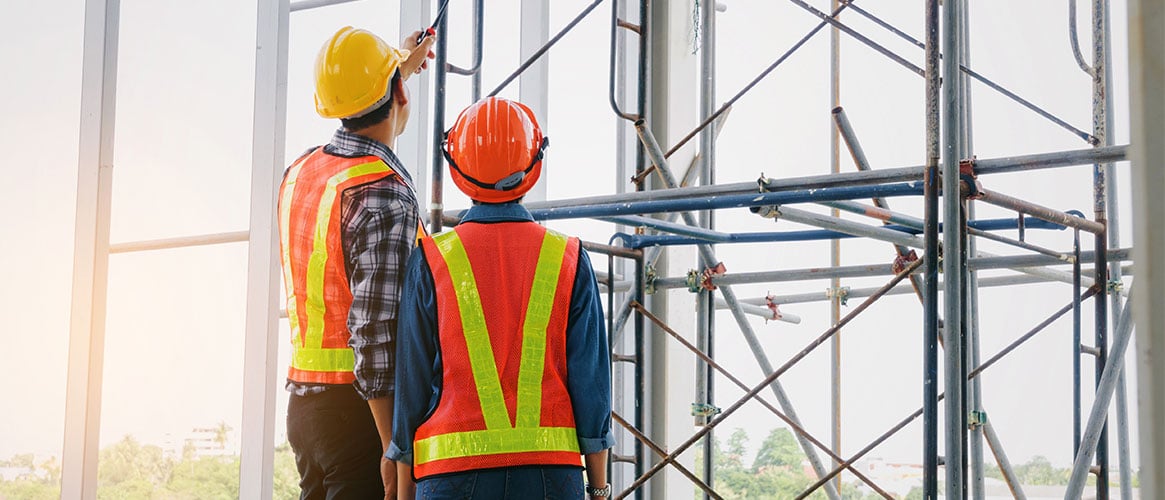Each year millions of employees work at elevated heights using scaffold systems. Scaffolds are generally considered safer than ladders for most work, however there is still a serious risk to your workers. Injuries and deaths can occur due to falls, being struck by falling objects, and from electrical hazards. These injuries can be prevented by taking the proper safety precautions.
Scaffolding safety violations are among the most often cited by OSHA each year. Many of those citations are the result of improperly built structures. A qualified person must supervise and direct the assembly and dismantling of scaffolds. This qualified person must also approve any modification to the system. Additionally, a competent person must inspect the scaffold prior to employee use, even if the scaffold is built by another contractor or for another contractor. The competent person must have the knowledge and ability to identify predictable hazards, such as electrical power lines, broken or damaged scaffold parts, and missing planks and rails. As a competent person, they must have the authority to red tag the scaffold if the scaffold is found unsafe.
What your employees need to know about safe scaffold use
Employees should understand the types of hazards associated with scaffold use. Falls can occur if fall prevention measures or proper access to the scaffold are not in place. Tools and materials that are not properly secured can fall from scaffolds and strike someone working below. Falls, struck-by, and crushed-by injuries can also occur if an overloaded or unstable scaffold collapses. All employees should regularly check the scaffold system for damage.
Electrical hazards are present when a scaffold is built too close to overhead power lines or a building’s electrical connections. Tools and equipment used on scaffolds present additional electrical hazards if they come in contact with power lines. Scaffolds should be constructed a safe distance from power lines—the actual distance will vary based on the power line voltage.
What your employees need to do to work safely from a scaffold
Before work begins, all employees must be trained on the specific scaffold system in use. This gives them a good understanding of the hazards that they'll face, and how to mitigate those hazards. Some of the things to look out for when working on scaffold include:
- Scaffold systems that are not plumb, square, and level
- Missing or unsecured mid and top guardrails or cross-bracing
- Platforms that are not fully planked or have planks in poor condition
- Improper or no available access to scaffold platforms
- Scaffold that are not tied properly to the structure
- Missing base plates and base plates not secured to 2”x10”x10” wooden base, or equivalent, when resting on earth or soft material

